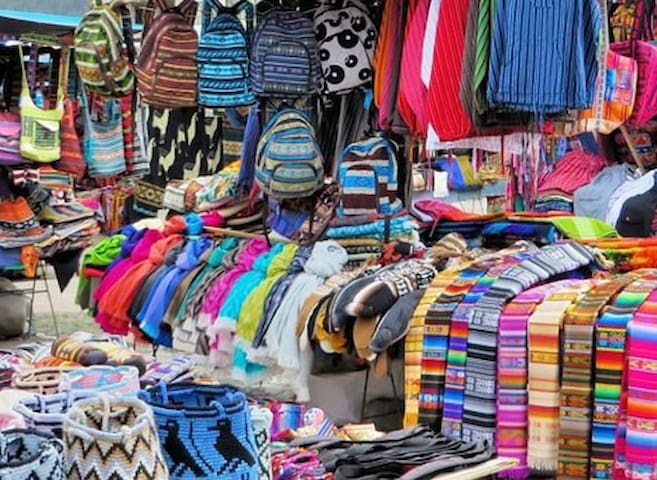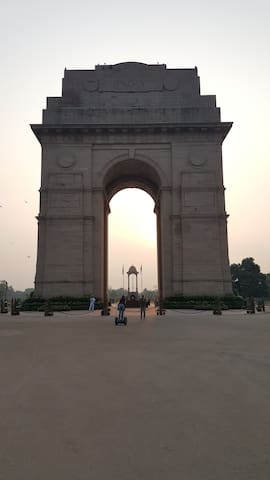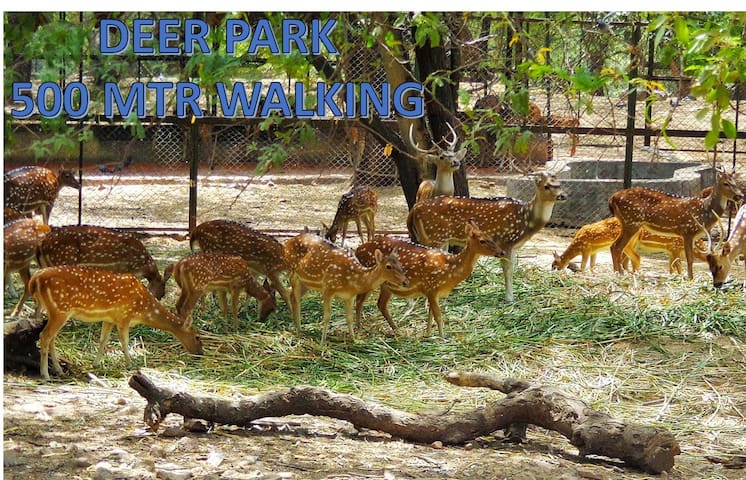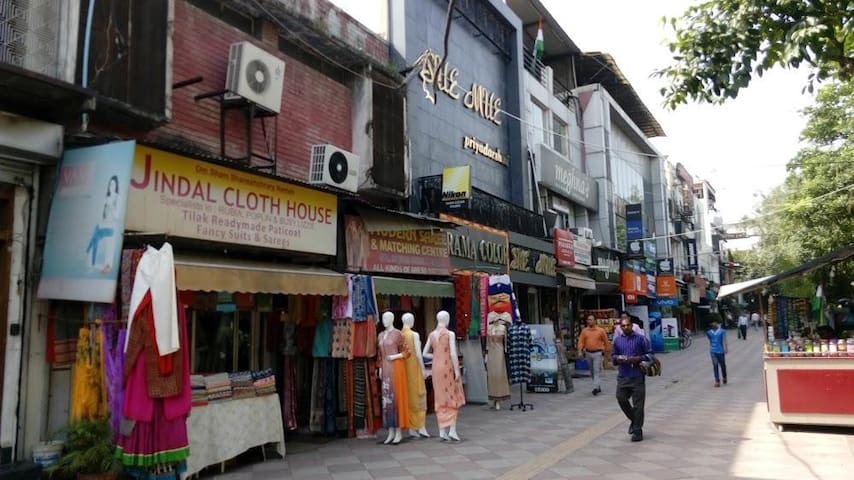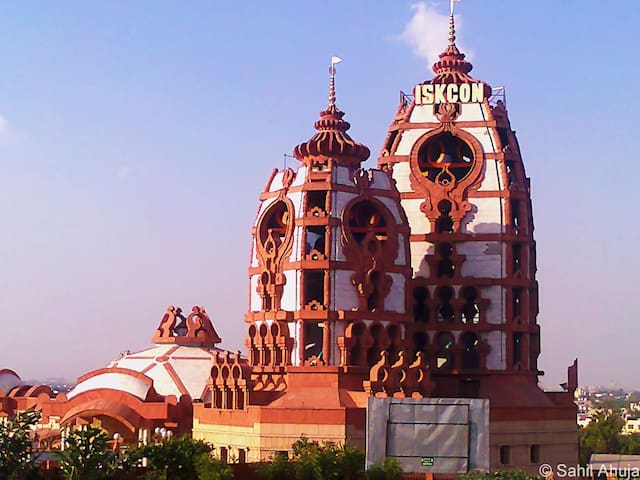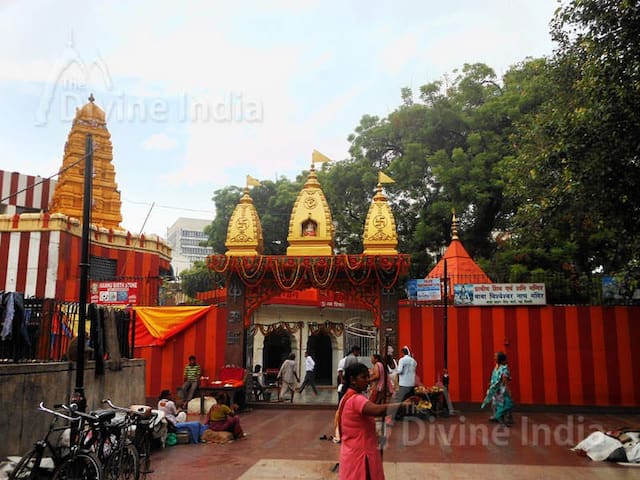Local Market
Sarojini Nagar market is famous for clothes shopping, decorative item shopping and you can also buy cheap backpacks in Sarojini Nagar market. The market also boasts of its wide range of home decor items like cushions, cushion covers, paintings and fancy lamps.
34 स्थानीय लोगों का सुझाव
Sarojini Nagar Market
Sarojini Nagar market is famous for clothes shopping, decorative item shopping and you can also buy cheap backpacks in Sarojini Nagar market. The market also boasts of its wide range of home decor items like cushions, cushion covers, paintings and fancy lamps.
Lajpat Nagar is famous for Central Market, which is a popular shopping destination for garments, textiles, shoes, eateries, electronics and other things.
17 स्थानीय लोगों का सुझाव
Central Market
Lajpat Nagar is famous for Central Market, which is a popular shopping destination for garments, textiles, shoes, eateries, electronics and other things.
Sightseeing
Humayun's tomb (Hindustani or Urdu: Maqbara-i Humayun) is the tomb of the Mughal Emperor Humayun in Delhi, India. The tomb was commissioned by Humayun's first wife and chief consort, Empress Bega Begum (also known as Haji Begum), in 1558, and designed by Mirak Mirza Ghiyas and his son, Sayyid Muhammad,[8] Persian architects chosen by her. It was the first garden-tomb on the Indian subcontinent, and is located in Nizamuddin East, Delhi, India
124 स्थानीय लोगों का सुझाव
Humayun's Tomb
Humayun's tomb (Hindustani or Urdu: Maqbara-i Humayun) is the tomb of the Mughal Emperor Humayun in Delhi, India. The tomb was commissioned by Humayun's first wife and chief consort, Empress Bega Begum (also known as Haji Begum), in 1558, and designed by Mirak Mirza Ghiyas and his son, Sayyid Muhammad,[8] Persian architects chosen by her. It was the first garden-tomb on the Indian subcontinent, and is located in Nizamuddin East, Delhi, India
afdarjung's Tomb is a sandstone and marble mausoleum in Delhi, India. It was built in 1754 in the late Mughal Empire style for Nawab Safdarjung. The monument has an ambience of spaciousness and an imposing presence with its domed and arched red brown and white coloured structures. Safdarjung, Nawab of Oudh, was made prime minister of the Mughal Empire (Wazir ul-Mamlak-i-Hindustan) when Ahmed Shah Bahadur ascended the throne in 1748.
38 स्थानीय लोगों का सुझाव
सफ़दरजंग का मकबरा
afdarjung's Tomb is a sandstone and marble mausoleum in Delhi, India. It was built in 1754 in the late Mughal Empire style for Nawab Safdarjung. The monument has an ambience of spaciousness and an imposing presence with its domed and arched red brown and white coloured structures. Safdarjung, Nawab of Oudh, was made prime minister of the Mughal Empire (Wazir ul-Mamlak-i-Hindustan) when Ahmed Shah Bahadur ascended the throne in 1748.
The Qutub Minar, also spelled as Qutb Minar and Qutab Minar, is a minaret and "victory tower" that forms part of the Qutub complex. It is a UNESCO World Heritage Site in the Mehrauli area of South Delhi, India. It is one of most visited tourist spots in the city due to it being one of the earliest that survives in the Indian subcontinent.
171 स्थानीय लोगों का सुझाव
Qutb Minar
The Qutub Minar, also spelled as Qutb Minar and Qutab Minar, is a minaret and "victory tower" that forms part of the Qutub complex. It is a UNESCO World Heritage Site in the Mehrauli area of South Delhi, India. It is one of most visited tourist spots in the city due to it being one of the earliest that survives in the Indian subcontinent.
The India Gate (formerly known as the All India War Memorial) is a war memorial located astride the Rajpath, on the eastern edge of the "ceremonial axis" of New Delhi, formerly called Kingsway. It stands as a memorial to 90,000 soldiers of the British Indian Army who died in between 1914 and 1921 in the First World War, in France, Flanders, Mesopotamia, Persia, East Africa, Gallipoli and elsewhere in the Near and the Far East, and the Third Anglo-Afghan War. 13,300 servicemen's names, including some soldiers and officers from the United Kingdom, are inscribed on the gate. Designed by Sir Edwin Lutyens, the gate evokes the architectural style of the triumphal arch such as the Arch of Constantine, in Rome, and is often compared to the Arc de Triomphe in Paris, and the Gateway of India in Mumbai.
15 स्थानीय लोगों का सुझाव
India Gate
Kartavya PathThe India Gate (formerly known as the All India War Memorial) is a war memorial located astride the Rajpath, on the eastern edge of the "ceremonial axis" of New Delhi, formerly called Kingsway. It stands as a memorial to 90,000 soldiers of the British Indian Army who died in between 1914 and 1921 in the First World War, in France, Flanders, Mesopotamia, Persia, East Africa, Gallipoli and elsewhere in the Near and the Far East, and the Third Anglo-Afghan War. 13,300 servicemen's names, including some soldiers and officers from the United Kingdom, are inscribed on the gate. Designed by Sir Edwin Lutyens, the gate evokes the architectural style of the triumphal arch such as the Arch of Constantine, in Rome, and is often compared to the Arc de Triomphe in Paris, and the Gateway of India in Mumbai.
The Lotus Temple, located in Delhi, India, is a Baháʼí House of Worship that was dedicated in December 1986. Notable for its flowerlike shape, it has become a prominent attraction in the city. Like all Houses of Worship, the Lotus Temple is open to all, regardless of religion or any other qualification. According to Shoghi Effendi, a Bahá'í temple is a “silent teacher” of the Bahá'í faith. The building is composed of 27 free-standing marble-clad "petals" arranged in clusters of three to form nine sides, with nine doors opening onto a central hall with a height of slightly over 34 meters and a capacity of 2,500 people. The Lotus Temple has won numerous architectural awards and has been featured in many newspaper and magazine articles.
156 स्थानीय लोगों का सुझाव
लोटस मंदिर
Lotus Temple RoadThe Lotus Temple, located in Delhi, India, is a Baháʼí House of Worship that was dedicated in December 1986. Notable for its flowerlike shape, it has become a prominent attraction in the city. Like all Houses of Worship, the Lotus Temple is open to all, regardless of religion or any other qualification. According to Shoghi Effendi, a Bahá'í temple is a “silent teacher” of the Bahá'í faith. The building is composed of 27 free-standing marble-clad "petals" arranged in clusters of three to form nine sides, with nine doors opening onto a central hall with a height of slightly over 34 meters and a capacity of 2,500 people. The Lotus Temple has won numerous architectural awards and has been featured in many newspaper and magazine articles.
Neighbourhoods
Deer Park is located in South Delhi also known as A.N. Jha Deer Park, named after famous social worker Aditya Nath Jha. This place is popular for walking, jogging and weekend outings. Deer Park comprises many subsections such as Duck Park, Picnic Spots Rabbit Enclosures etc. The Park has historical tombs of Mughal Era. The park is accessible from Safdarjung Enclave and Green Park, Hauz Khas Village. It is also connected to District Park thus making is approachable from R K Puram near the courts side of the Delhi Lawn Tennis Association.
36 स्थानीय लोगों का सुझाव
Deer Park
Deer Park is located in South Delhi also known as A.N. Jha Deer Park, named after famous social worker Aditya Nath Jha. This place is popular for walking, jogging and weekend outings. Deer Park comprises many subsections such as Duck Park, Picnic Spots Rabbit Enclosures etc. The Park has historical tombs of Mughal Era. The park is accessible from Safdarjung Enclave and Green Park, Hauz Khas Village. It is also connected to District Park thus making is approachable from R K Puram near the courts side of the Delhi Lawn Tennis Association.
It was established in the early 1960s and today has all the amenities of a rich cosmopolitan culture along with large residential and commercial areas and many religious places. Green Park is considered by some as the "lungs" of Delhi, as it is near one of the largest green areas in the city.
It is divided into two parts : Green Park Main and Green Park Extension. The Main hosts a medium-sized market with several restaurants and a shopping complex.
Green Park Market, Block T
It was established in the early 1960s and today has all the amenities of a rich cosmopolitan culture along with large residential and commercial areas and many religious places. Green Park is considered by some as the "lungs" of Delhi, as it is near one of the largest green areas in the city.
It is divided into two parts : Green Park Main and Green Park Extension. The Main hosts a medium-sized market with several restaurants and a shopping complex.
Food scene
Traditional dhaba cuisine gets a makeover at this modern dining venue with funky wall art.
12 स्थानीय लोगों का सुझाव
Rajinder Da Dhaba
Nauroji Nagar MargTraditional dhaba cuisine gets a makeover at this modern dining venue with funky wall art.
Place of Worship
Big Hare Krishna temple & Vedic learning centre offering courses, events & a vegetarian cafe
25 स्थानीय लोगों का सुझाव
ईएसकॉन मंदिर दिल्ली
Iskcon Temple RoadBig Hare Krishna temple & Vedic learning centre offering courses, events & a vegetarian cafe
Shri Ganesh Mandir
Baba Kharak Singh RoadGurudwara Bangla Sahib is one of the most prominent Sikh gurdwara, or Sikh house of worship, in Delhi, India, and known for its association with the eighth Sikh Guru, Guru Har Krishan, as well as the holy pond inside its complex, known as the "Sarovar." It was first built as a small shrine by Sikh General Sardar Baghel Singh in 1783, on the bungalow donated by king Raja Jai Singh of Amer, who supervised the construction of nine Sikh shrines in Delhi in the same year, during the reign of Mughal Emperor, Shah Alam II.
33 स्थानीय लोगों का सुझाव
गुरुद्वारा बंगला साहिब
Baba Kharak Singh RoadGurudwara Bangla Sahib is one of the most prominent Sikh gurdwara, or Sikh house of worship, in Delhi, India, and known for its association with the eighth Sikh Guru, Guru Har Krishan, as well as the holy pond inside its complex, known as the "Sarovar." It was first built as a small shrine by Sikh General Sardar Baghel Singh in 1783, on the bungalow donated by king Raja Jai Singh of Amer, who supervised the construction of nine Sikh shrines in Delhi in the same year, during the reign of Mughal Emperor, Shah Alam II.
शहर से जुड़ी सलाह
घूमना-फिरना
Green Park Metro Station (Yellow Line)
The Delhi Metro is a mass rapid transit system serving Delhi and its satellite cities of Ghaziabad, Faridabad, Gurgaon, Noida, Bahadurgarh and Ballabhgarh, in the National Capital Region of India. It is by far the largest and busiest metro rail system in India, and the second oldest after the Kolkata Metro.

